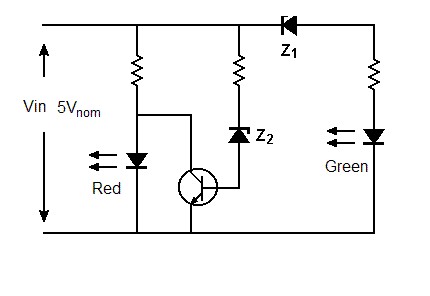Linspire
Full Member level 5
Hi,
I want to design a simple voltage indicator LED for my integrated circuit PIC18F4520.
Let say 5V will light up the green led to indicate full battery,
where as below 4.5V will light up red led to indicate low battery.
So far, what I can think is using voltage divider.
Any better solution ?
Or someone can guide me ?
Regards
Linspire
I want to design a simple voltage indicator LED for my integrated circuit PIC18F4520.
Let say 5V will light up the green led to indicate full battery,
where as below 4.5V will light up red led to indicate low battery.
So far, what I can think is using voltage divider.
Any better solution ?
Or someone can guide me ?
Regards
Linspire
